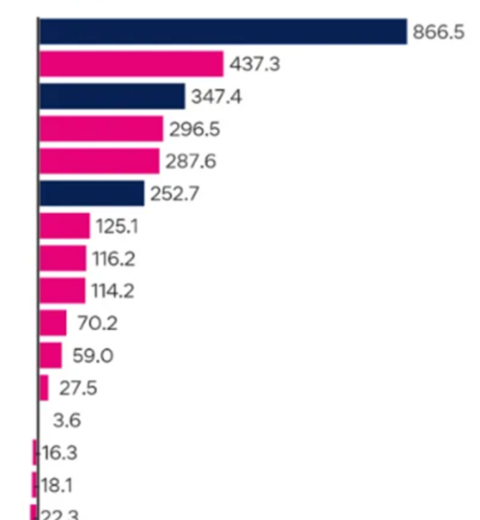/ WHAT IS CAUSING THE SKILLS DEFICIT IN AUSTRALIA, HOW DOES IT IMPACT BUSINESS?
/ WHAT CAN BE DONE IN THE SHORT AND LONG TERM TO ALLEVIATE THIS ISSUE?
In the dynamic landscape of Australia’s digital-first market, companies across sectors and sizes are
grappling with the challenges of securing qualified personnel to fill critical roles. This dilemma poses
a significant obstacle to achieving market success, as organisations are encountering deficiencies in
both the quality and quantity of specialised talent necessary to bolster their service offerings and
maintain a competitive edge.
Wee-Oon, Chief Executive of OZemployment highlights the crucial role of cutting-edge technical
capabilities in achieving success, but many businesses face a competency crisis due to a shortage of
skilled professionals. This scarcity is a prevailing issue with no imminent resolution.
/ WHY THE SKILLS SHORTAGE IN AUSTRALIA?
Australia’s skills shortage is a multifaceted problem affecting businesses of all scales and sectors.
Several contributing factors include:
- Ageing Workforce: The aging population, with a substantial portion of the workforce approaching
retirement, makes it challenging for businesses to find qualified replacements. - Training and Education Gap: A deficit in training and education tailored to emerging skills needs
leads to a scarcity of workers with the requisite qualifications, particularly in rapidly evolving sectors
like cybersecurity and data analytics. - Immigration Policies: Changes in immigration policies restrict the influx of skilled workers from
overseas, exacerbating the skills shortage. - Industry Growth: Certain sectors experiencing rapid expansion, such as healthcare and
information technology, demand more skilled workers than are currently available.
/ IMPACT ON BUSINESSES
The persistent skills shortage in Australia places considerable strain on businesses. Feedback from
industry captains indicates that many Australian business leaders anticipate a growing financial
impact due to the lack of in-house skills in the coming years.
Challenges include: - Talent Acquisition and Retention: Difficulty in finding and retaining skilled workers results in
higher recruitment and training costs, along with increased employee turnover. - Productivity and Competitiveness: Inability to secure skilled workers hampers project delivery and
service efficiency, negatively impacting productivity and competitiveness. - Rising Labor Costs: Intense competition for a limited talent pool can drive up wages for skilled
workers, leading to rising labour costs and affecting business profitability. - Innovation and Growth Constraints: Without access to the necessary skilled workforce, businesses
struggle to innovate, invest in technology, or expand into new markets, limiting their growth
potential.
/ LONG TERM SOLUTIONS
Addressing the skills shortage in Australia requires collaboration among public, private, and
government entities. Long-term solutions include:
- Encourage Training and Education: Stakeholders can collaborate to develop vocational training
and education programs, including apprenticeships and internships, to equip workers with the skills
businesses need. - Promote Immigration: Government policies should encourage immigration of skilled workers and
retain international students as part of the Australian workforce. - Invest in Technology and Automation: Businesses can enhance efficiency and productivity by
investing in technology and automation, making them more competitive. - Tap into a Broader Talent Pool: Diversifying the workforce allows businesses to access a wider
range of skills and perspectives, fostering innovation and resilience in the face of technological
change.
/ SHORT TERM SOLUTIONS FOR EMPLOYERS
While structural issues underly the skills shortage, businesses can implement short-term solutions: - Flexible Hiring Mindset: Employers can consider candidates with potential for growth, even if they
don’t meet all job requirements, expanding the talent pool and potentially lowering salary
expectations. - Upskilling Existing Employees: Investing in training programs can upskill existing employees, filling
open positions through internal pathways and preparing for future growth. - Knowledge Sharing Culture: Conducting organisational skills audits and fostering knowledge
sharing through collaboration and mentorship can bridge gaps in technical capabilities. - Hire Contract Workers: Contract workers provide access to specialized skills without committing
to long-term contracts, allowing companies to address specific projects with expertise from
anywhere in the world.
In conclusion, addressing Australia’s skills shortage requires a strategic blend of long-term initiatives
and short-term adaptive measures. Collaborative efforts and a proactive approach are essential to
ensure sustained workforce readiness and business success. If you need assistance in attracting and
retaining specialist talent in Australia, consider partnering with OZemployment, a leading staffing
and recruitment agency with expertise in finding and placing experts.




